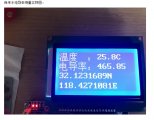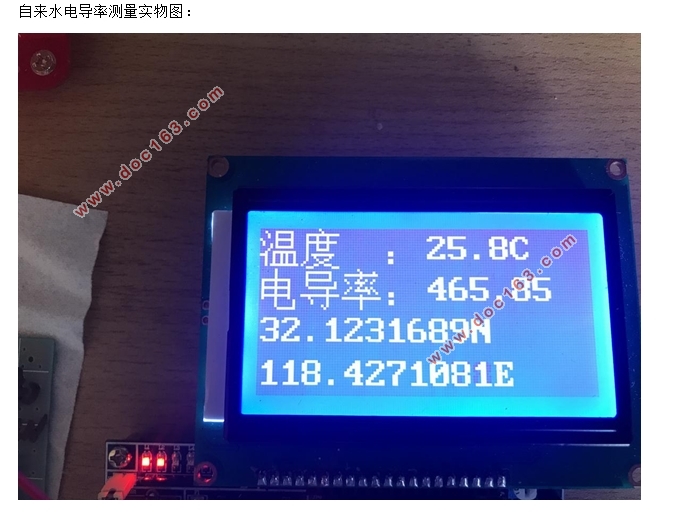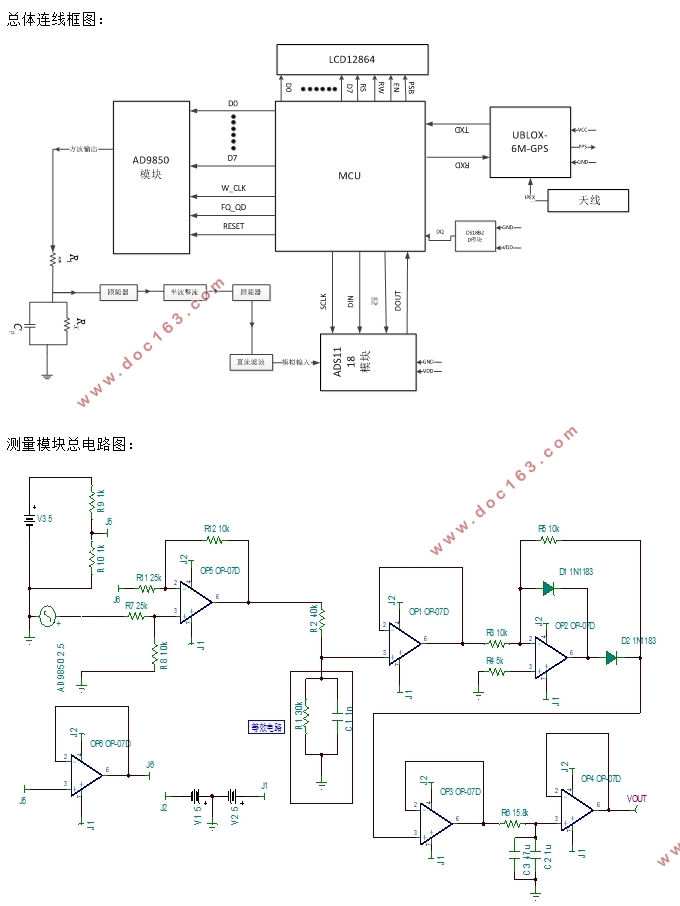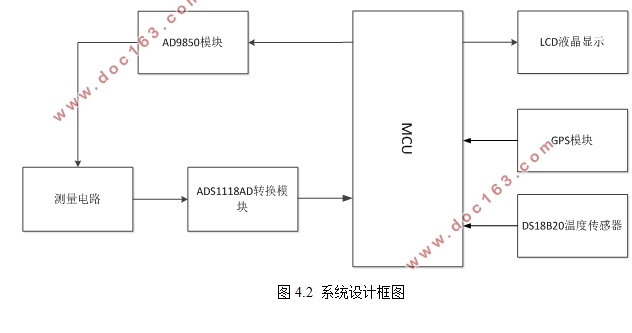智能电导率测试系统设计

智能电导率测试系统设计(论文12500字)
摘要:随着社会的进步发展以及日益更新的科学技术要求,电导率的参数的测量越来越受到重视。本文提出了一种基于msp430单片机的电导率测量方法,并在此基础上添加了GPS模块,测量精度在2%以内。测量方法是通过用已知电阻串联分压,再通过添加选频信号测量输出,计算电导率值。信号发生器选择的是AD9850模块,此模块可以通过编程产生不同频率的方波或正弦波,测量模块选择的是ADS1118模块,其精度为16位,测量更加准确。单片机读取DS18B20模块的温度信息,在程序中进行温度补偿。最后,使用UBLOX-6M-GPS模块测出溶液所在地理位置,方便后期的数据分析。
关键词:电导率;选频测量;msp430;不动点迭代法;温度补偿
Intelligent electrical conductivity test system design
Abstract:With the development of society and the increasingly updated scientific and technical requirements, the measurement of conductivity parameters is attracting more and more attention. This paper presents a method based on msp430 single-chip conductivity measurement, and on this basis to add a GPS module, the measurement accuracy of less than 2%. The measurement method is to calculate the conductivity value by dividing the voltage with a known resistor in series, and then measuring the output by adding the selected frequency signal. Signal generator is selected AD9850 module, this module can be programmed to produce different frequencies of the square wave or sine wave, the measurement module is selected ADS1118 module, the accuracy of 16 bits, the measurement is more accurate. The microcontroller reads the temperature information of the DS18B20 module and performs temperature compensation in the program. Finally, the UBLOX-6M-GPS module is used to measure the geographical location of the solution and facilitate the later data analysis. [来源:http://Doc163.com]
Key words:Conductivity;Frequency measurement;MSP430;Fixed point iteration method;Temperature compensation
[来源:http://www.doc163.com]




目 录
一 绪 论 1
1.1 选题目的与意义 1
1.2 国内外研究现状 1 [来源:http://Doc163.com]
1.3 研究内容 2
二 相关概念 3
2.1 电导率 3
2.2 极化效应及电解质电容 3
2.3 温度产生的影响 4
三 方案选择 5
3.1 频率法 5
3.2 相敏检波法 5
3.3 选频测量法 6
四 方案实施 7
4.1 溶液等效电路 7
4.2 系统总体框图设计 7
4.3 测量原理 7
五 硬件设计 10
5.1 测量电路设计 10
5.2 信号源模块 11
5.3 ADS1118AD转换模块 12
5.4 DS18B20温度传感器 13
5.5 LCD12864液晶显示 14
5.6 UBLOX-6M-GPS模块 15
5.7 电导电极 16
5.8 单片机选择 16
六 软件设计 17
七 数据处理 19
7.1 曲线拟合 19
7.2 不动点迭代法 19
7.3 温度补偿方案 19
7.4 测量电路数据分析 20
八 总结与展望 22
参考文献 23
致谢 24
附录 25 [资料来源:http://doc163.com]
